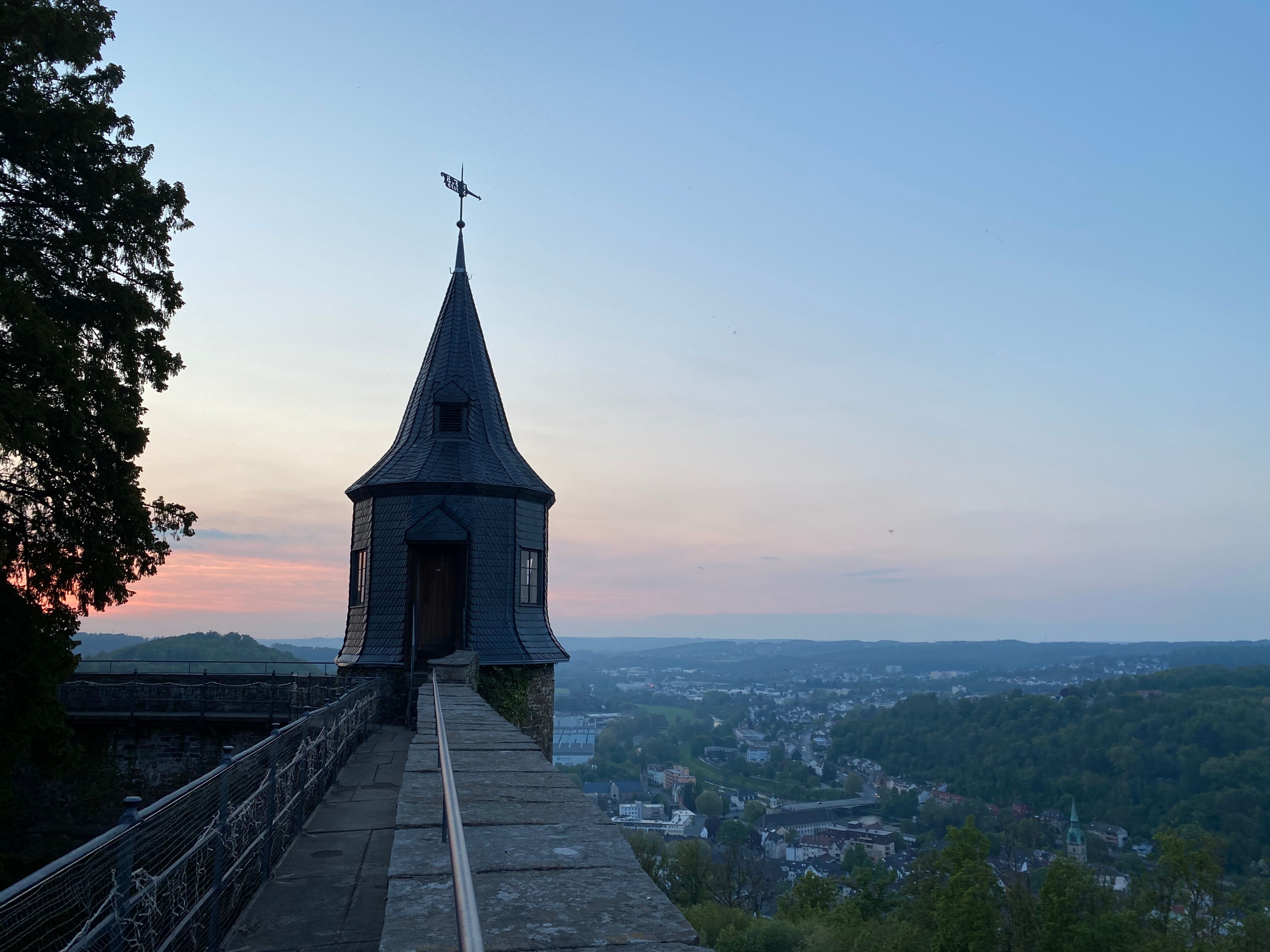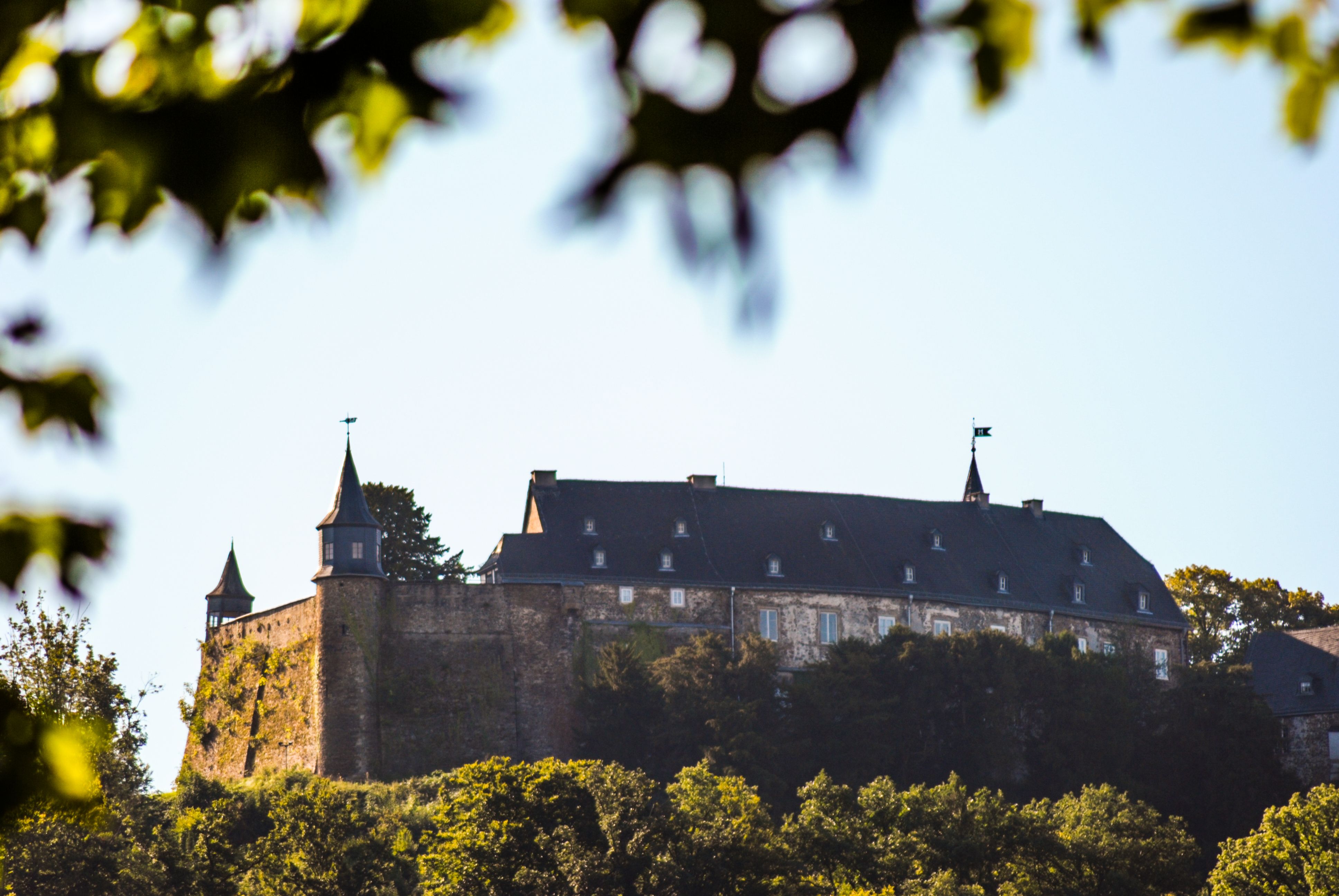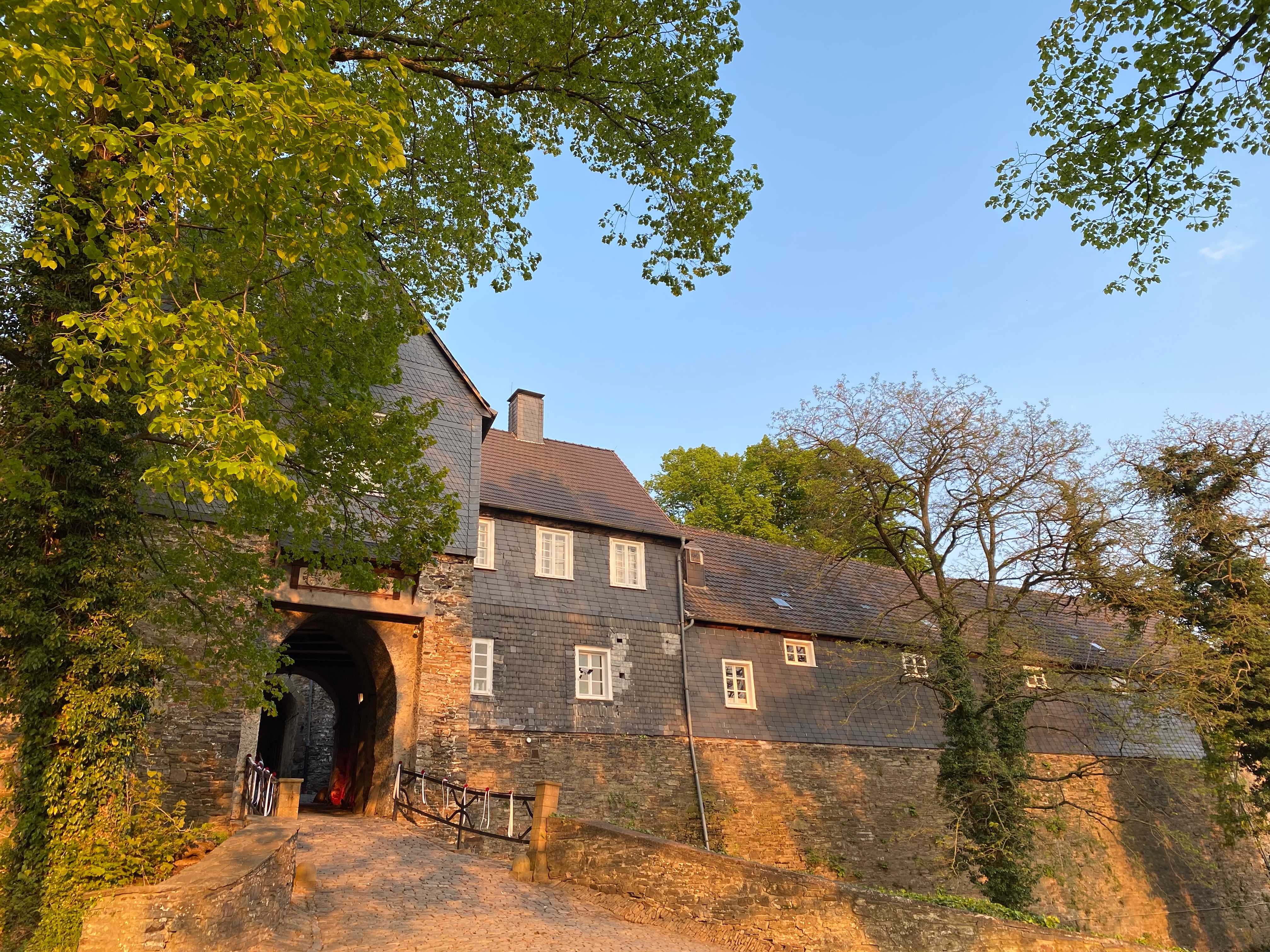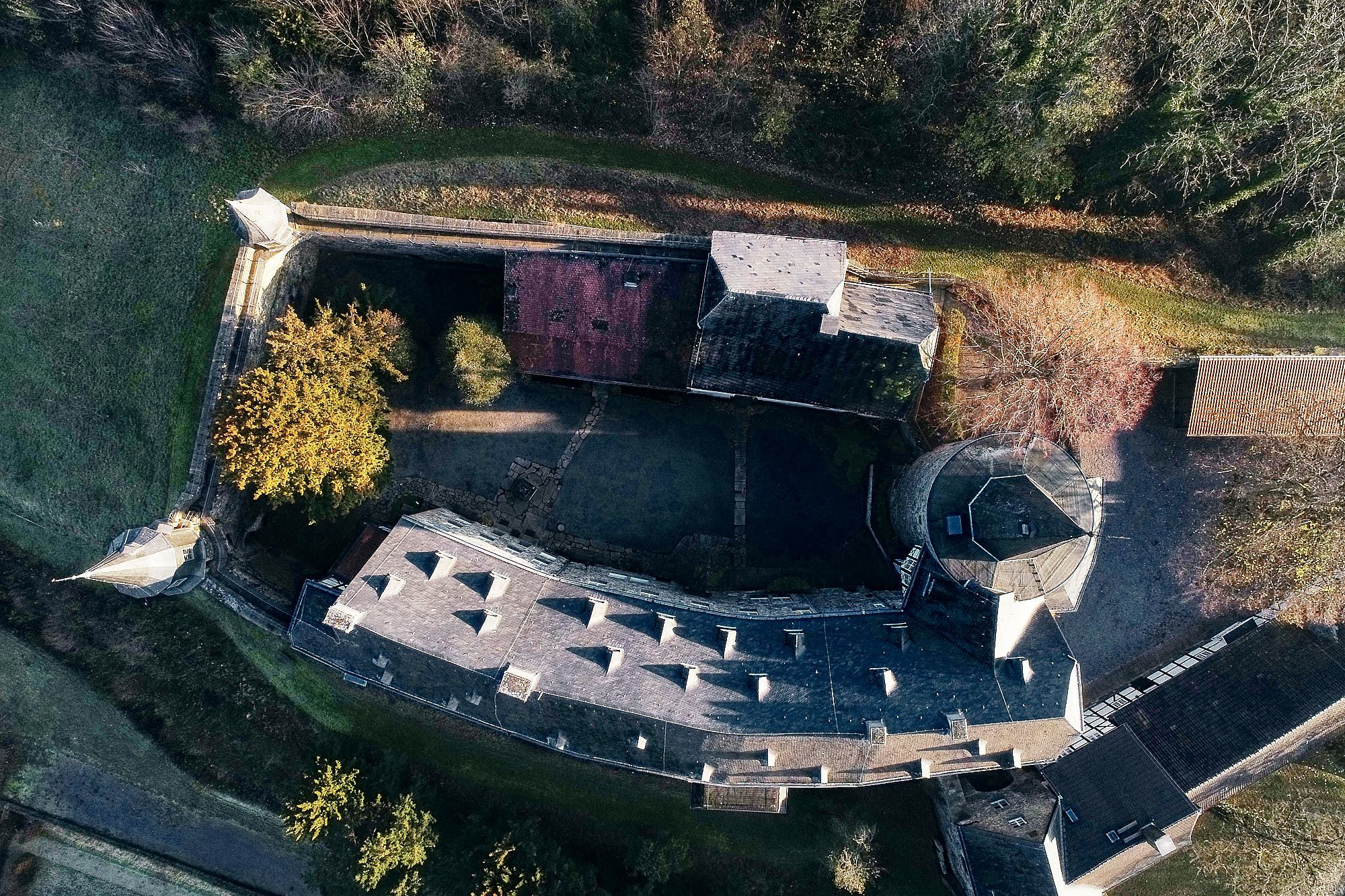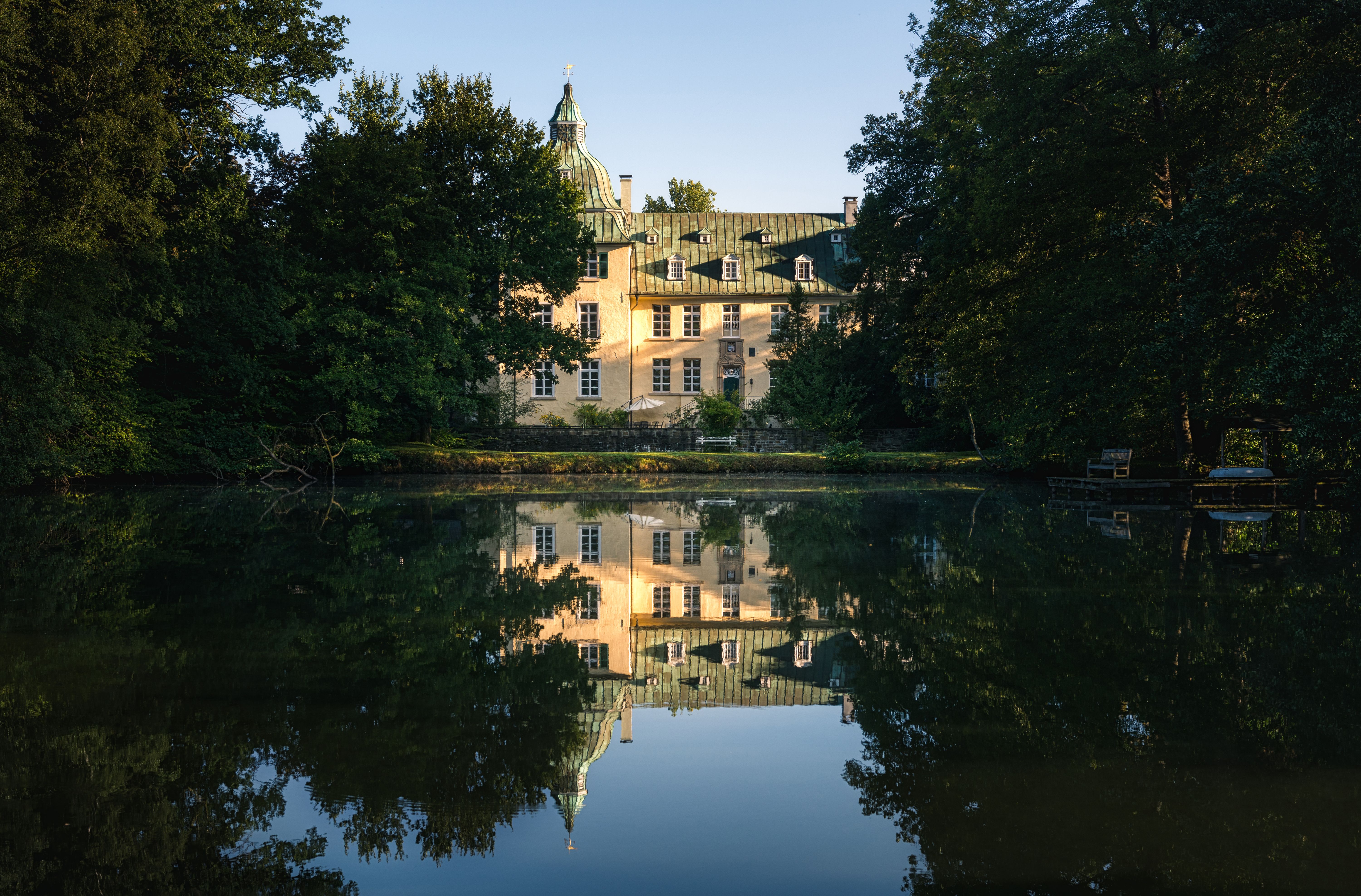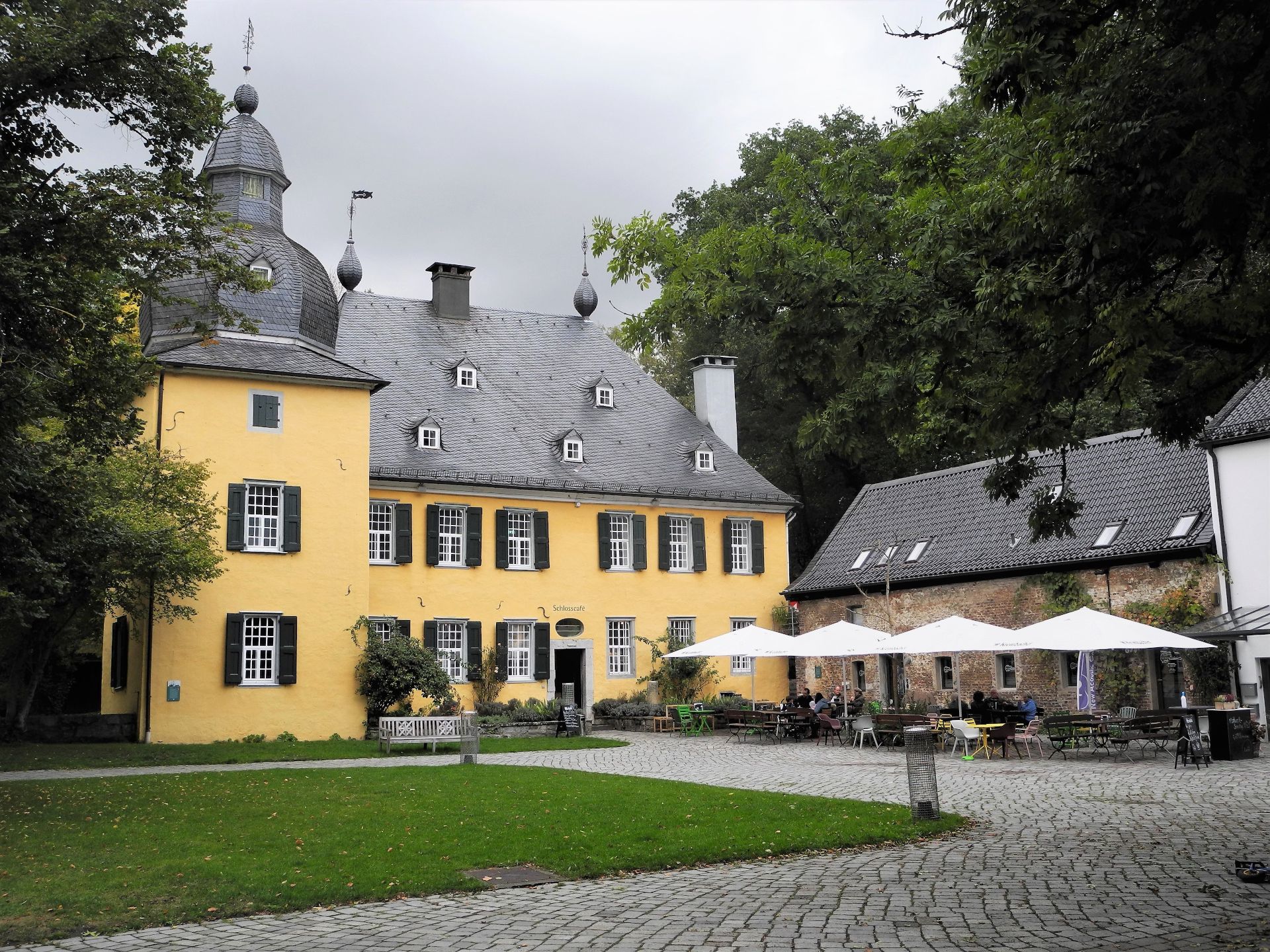Hohenlimburg Castle rises high above the Lenne valley on a mountain spur: one of the oldest hilltop castles in Westphalia and the only one largely preserved in its original state. Around 1240, Dietrich I von Altena-Isenberg had the fortified complex "Novum Castrum Lymborgh" built, thus sending out a clear signal of territorial power. As early as the 13th century, it formed the core of the county of the same name, which was the political center of the region until 1808.
Over the centuries, the former fortress was besieged, destroyed and rebuilt several times: During the Thirty Years' War, for example, it served as quarters for imperial troops. From 1592, the castle and county came into the possession of the Princes of Bentheim-Tecklenburg, who transformed the medieval castle into a prestigious residential ensemble in the 17th and 18th centuries: the "Nassauer Schlösschen" was built around 1615/1625, and between 1729 and 1756, the castle was transformed into a residence including a baroque hillside garden under Count Moritz Casimir I.
The mighty keep, which was once ten meters in diameter and had walls over three meters thick, is as much of an attraction today as it was then. Alongside the curtain wall, the wall tower in the north and other buildings from the 13th and 14th centuries, it is the oldest structure in Hohenlimburg Castle. After being struck by lightning in 1811, it was rebuilt as a reduced, truncated stump with an emergency dome.
Meanwhile, guests can visit the exhibition on the "Black Hand" of Hohenlimburg in the giant, which juxtaposes mythical stories with historical facts. Researchers found a mummified human hand in the ruins of the tower after it was largely destroyed by a lightning strike and subsequent fire on the night of July 19-20, 1811. Scientists are still arguing about who it belongs to.
One legend tells of an apprentice cook who assaulted his chef, another of the son of a lord of the castle who raised his hand against his mother. Modern CT scans and radiocarbon dating date the origin of the hand to the 16th century. It is likely to be a medieval "body mark" of an adult man, representing evidence from an unsolved murder investigation.
A visit to Hohenlimburg Castle is therefore not only a journey through medieval architecture and late baroque ambience, a tour also provides knowledge of regional history and local folklore. Travelers who want to find out even more about the attraction in Hagen should take an archaeological walk in the Hohenlimburg district after visiting the castle. Both the remains of the Sieben Gräben hill fort and the ruins of Raffenburg Castle are well worth a visit.
By the way: Visiting just this one castle would be far too much of a shame. NRW is the state with the most castles and palaces in Germany. To make it easier for you to choose, we have found a perfect counterpart for Hohenlimburg Castle: Werdringen Castle. Find out more about the duo here.
